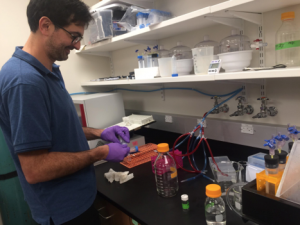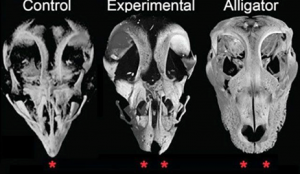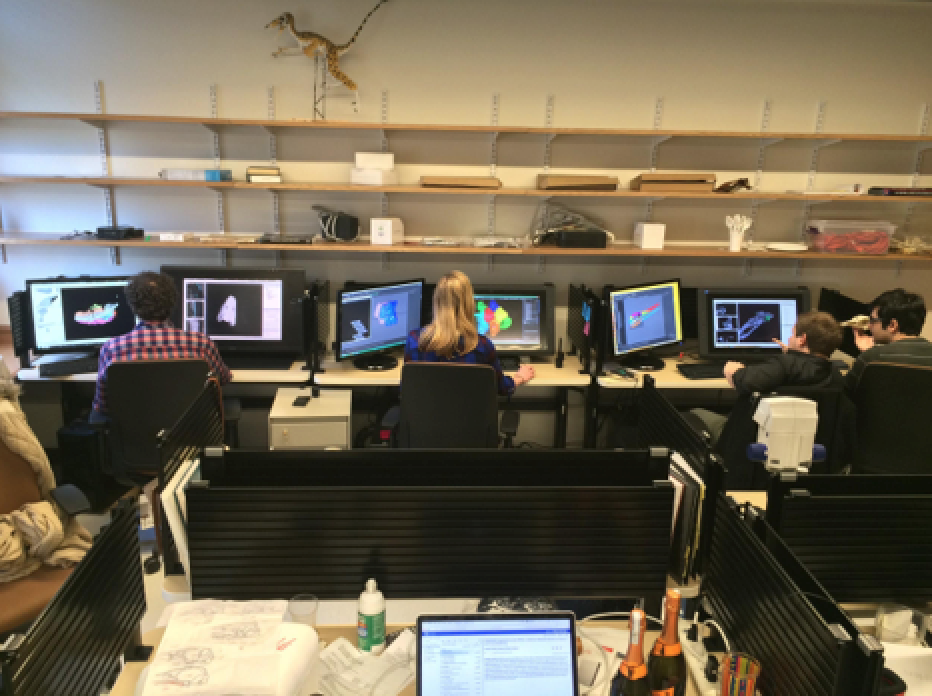
Bringing back dinosaurs 65 million years after they’ve gone extinct is an idea that often comes up in popular culture, like in Steven Spielberg’s recent film, Jurassic World. Our childhood imaginations cannot help but be excited by the sight of Velociraptors hunting prey in synchronized formation or the iconic Tyrannosaurus Rex howling its thunderous roar, even though these dinosaurs were merely computer animated.
Nevertheless, what movies have long fantasized is no longer just science fiction. Evolutionary biologists have developed new ways to alter the proteomes and genomes of dinosaurs’ modern descendants, so that they resemble their ancient ancestors. One such effort is ongoing at Yale University. A team led by Bhart-Anjan Bhullar, an associate professor of Geology and Geophysics at Yale, and Arhat Abzhanov, an evolutionary biologist at Harvard University, are seeking to recreate in the laboratory the evolutionary transition from dinosaurs to birds. Future experiments may involve the use of the genome-engineering tool CRISPR/Cas9, which could allow for scientists to study the evolutionary past of organisms more easily.

The research team began by comparing the development of a pair of bones—known as premaxilla—in the embryos of chickens and emus to those of dinosaurs’ closest living relatives: lizards, turtles and alligators. In the development of bird embryos, the two premaxillary bones elongate and fuse together to form the beak. In reptiles (and in dinosaur fossil evidence), the premaxillary bones do not grow, remaining separated to form the snout. To bridge the evolutionary gap between birds and dinosaurs, the team tinkered with the biochemical pathways governing the development of the premaxillary bones in a bird’s beak such that it more closely resembled a dinosaur’s snout. This allowed scientists to pinpoint the missing traits in birds that were once present in their long-since deceased ancestors.
In the experiment, the researchers altered two signal transduction pathways fundamental to beak development in avian embryos. The first pathway involves the expression of a protein known as fibroblast growth factor 8 (Fgf8). Fgf8 is expressed across a wide band in a developing chicken’s face, promoting the growth of the premaxillary bones. The WnT pathway then follows that of Fgf8, further encouraging facial development. In reptilian embryos, however, the Fgf8 and WnT pathways are active in only two small regions of the face.
In order to modulate development in the chicken, researchers injected a bead each avian embryo, which released chemicals interfering with the Fgf8 and WnT pathways. Developing embryos were then viewed via computed tomography (CT) scans. Experimental results demonstrated an array of different phenotypes: some embryos were barely distinguishable from a modern chicken, while others had snouts strikingly similar to those of Archaeopteryx – a transitional species from non-avian dinosaurs to modern-day birds – and even those of Velociraptors.

Adjusting biochemical pathways is a traditional method used to modify the genomes of organisms. The advent of CRISPR/Cas9, however, has granted evolutionary biologists the opportunity to alter DNA with more precision than ever before. CRISPR/Cas9 serves as a pair of molecular scissors by cutting out particular segments of DNA, in which activated or inactivated genes can then be pasted at the site of the cut. Scientists are now using this form of genome editing to shed light on the evolutionary history of organisms, much akin to Bhullar’s efforts. Neil Shubin, a paleontologist from the University of Chicago, employed CRISPR to engineer a zebrafish that lacked certain hox13 genes, which are involved in the development of fins. Instead of fins, the rudimentary fingers and toes typical of four-legged land vertebrates (also known as tetrapods) were observed. Similar techniques have been used to trace the heritage of color vision in butterflies and acquisition of claws in crustaceans.
Applied to birds, CRISPR may be the breakthrough that allows scientists to transform present-day organisms into dinosaurs. Evolutionary biologists will be able to locate genes that dictated the genotypes and phenotypes crucial in the development of these so-called “terrible lizard[s]”. Moreover, CRISPR can be used to study the evolutionary past of organisms that we observe and encounter in our current time. “The goal is to understand the diversity of life based on the contingent historical events that have shaped the face of Earth today,” Bhullar said. “What we carry today results from millions of years of evolution,” he added. Bioengineered dinosaurs and other ancient organisms may not be currently feasible. But some day, our past may become our future.

